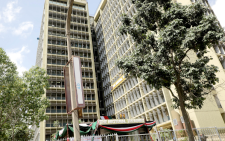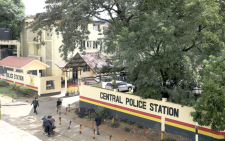With new MPs, Wanjiku will be Sh95b wealthier

The increase in number of constituencies has been a political hot topic as the BBI report is moving to the next stage of one million signature collections.
But in the midst of the politicking, we need to be put these additional 70 MPs within the context of resources and representation: that is where Wanjiku’s interest is.
Inequalities, especially where resources are concerned, can only be addressed through equitable distribution of resources.
And both the National Government Constituency Development Fund (NGCDF) and the National Government Affirmative Action Fund are home-grown initiatives meant to address inequalities in development around the country.
They have been anchored on constituencies and, therefore, representation becomes key because if it is not equitable, then resources are not equitably distributed.
Kilifi, for instance, has a population of about 1.5 million with only seven constituencies, yet when you consider that an MP is supposed to represent 132,000 constituents, then Kilifi should have eleven constituencies.
Kakamega should have 14 instead of 12, and Nakuru with 11 constituency needs five more to be equitably represented.
Uasin Gishu, Kisumu and Bungoma need three, two and four more respectively.
Nairobi and Kiambu should have at least 16 and four additional constituencies respectively while Kajiado needs at least three more constituencies.
These are figures based on the 2019 population and the representation quota arrived at by looking at the 2019 census and the proposed 360 constituencies, which suggest an MP should represent approximately 132,000 Kenyans.
Of course, there are many dynamics as captured in Article 89 on delimitations of electoral units.
For instance, the article is clear that the number of inhabitants in a constituency may be greater or lesser than the population quota based on geographical features and urban centres; community of interest, historical, economic and cultural ties; and means of communication.
Clause six further makes it clear that margin from population quota in a constituency or ward can be greater or lesser with more than 40 per cent and 30 per cent variation for cities and sparsely populated areas and other areas respectively.
Therefore, today constituencies with less than 20,000 registered voters, and perhaps less than 50,000 inhabitants such as Lafey and Banissa (Mandera); Isiolo South (Isiolo), Eldas, Tarbaj (Wajir), Fafi (Garissa), Lamu East (Lamu), Turkana East (Turkana) do exist courtesy of the provisions of the law. Some of these constituencies are, in fact, the biggest gainers in the BBI report because they still retain their status and the 137 million from NGCDF.
On the other hand, constituencies with more than 100,000 registered voters are disadvantaged because, just like the smaller population constituencies, they have the same amount from the NGCDF to address development issues for a comparatively large number of inhabitants.
The value in these MPs is in Sh 9.5 billion they will bring to the locals; it far outweighs the wage bill.
In fact, the NGCDF’s participatory approach in funding projects at the constituency level means that Wanjiku will have additional resources at the grassroots level where her voice in development is a lot more pronounced.
Politics aside, if you know the difference NGCDF has made, especially in the education Support for additional resources to address inequalities will not be influenced by political rhetoric. — The writer is a PhD candidate in political communication










